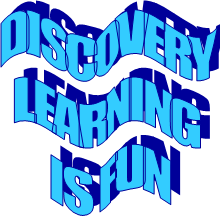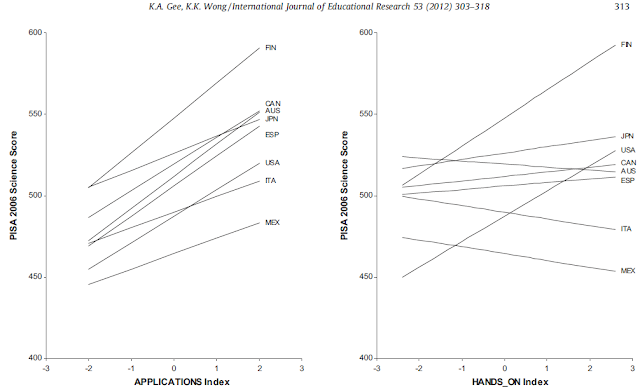Inquiry-Based Teaching Practices and Student's Science Achievement
Discovery-based approaches to science education in primary and secondary schools are now widespread across the globe. It is now possible to assess the impact of these programs on learning outcomes. Such exercise may not provide crystal clear cause-effect relationships since proper controls are not present, but a good statistical analysis of current data may still furnish useful correlations. Although discovery-based learning may seem a precise philosophy of education, it is in fact a spectrum of approaches and techniques. There is a range of how much support a student receives in a discovery-based classroom.
Kevin Gee and Kenneth Wong of Brown University have recently published a paper in the International Journal of Education Research in which the performance of students from eight countries (US, Mexico, Japan, Finland, Australia, Canada, Spain and Italy) in the science section of the 2006 Program for International Student Assessment (PISA) has been closely examined in the light of various inquiry-based approaches to science education. The abstract and the first two figures from the paper are posted here with kind permission from the authors.
 |
| http://www.sciencedirect.com/science/article/pii/S0883035512000365 |
The above investigation looks at four distinct approaches that have been commonly employed in discovery-based learning:
- Use of models or applications (coded as APPLICATIONS) - explaining what students learn in science inside the classroom relates to the outside world.
- Laboratory (hands-on) activities (coded as HANDS_ON) - doing experiments to explore a concept in science.
- Interaction (coded as INTERACTION) - classroom activities that allow for debate and discussion among the students
- Independent Investigation (coded as INVESTIGATIONS) - students are asked to design their own experiments and test their own ideas.
The results are displayed vividly in the following graphs:
First, only one index positively correlates with science achievement: APPLICATIONS. This is the only approach that seems transferable from one country to the next. This approach requires teachers who can capably highlight the relevance of science to society. For HANDS_ON, three countries, Australia, Mexico and Italy show a negative correlation. Australia differs from the other two with its students scoring above the average of 500. This index, without doubt, requires resources (laboratories and equipment) which probably play as a major factor. The INTERACTION index perhaps demonstrates the risk of students learning the wrong things if students are left to learn from each other. Finally and most importantly, the last graph (PISA 2006 Science Scores versus INVESTIGATIONS index) shows a very significant correlation that exists across all countries in the study. Gee and Wong write in their discussion/conclusion:
...the evidence seems to strongly suggest that students who independently select and carry out such investigations tend to have lowered science achievement....
The take home message from this study is that learning in science benefits from teaching within the context of world issues, current events, and everyday lives, but as other educators in the field have forewarned, a purely discovery-based approach which does not provide adequate support or guidance may do harm to science education.




Comments
Post a Comment